Blog 10: ¡Fin!
Looking back from when I have first started this semester, I had many expectations of what I wanted to learn and achieve in this course. Now that I am only a week away from completion, I can now say that I have gained more knowledge in this subject than I could imagine. I have understood cultural diversity on a completely different level along with how culture can impact individuals and even the environment. I was able to develop a vast understanding of how individuals from different cultures obtain different goals, morals, and values. My ambition is to learn how to study difference in human behavior form individualistic and collectivist cultures while acquiring their cultural perspective. I would like to also study different therapeutic techniques that will benefit and impact a variety of cultures. My attitude has changed about cultural psychology while taking the course. I have become more observant and intuitive about cultural identity throughout the semester. The course content has kept me intrigued and wanting to learn more about the subject. The one thing I would do differently if I took this class again is I would purchase the book Culture & Psychologyinstead of renting it through e-books. I regret not purchasing the book because I actually enjoyed the content that I read in Matsumoto’s 6thedition. The one way I have academically grown from this course is through the assignment topics given in the course, the positive and negative outlooks of cultural differences and psychology, critically thinking about influences of culture. The skill I have acquired while taking this course is understanding different cultural motives and values that I can adopt while experimenting and operating ways to therapeutically support individuals from different backgrounds.
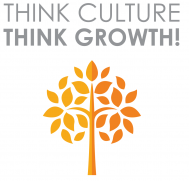
The photograph above represents growth and improvement within Culture.
Blog 9: My Top Three Topics
The top three topics I have learned so far in Cross Cultural Psychology is measuring personality across cultures, the variety of enculturation, and culture identity. All though I have learned many other topics in this course, these subjects of the course stood out to me the most because they have been brought up in other discussions I have with other courses and in my everyday life. In this course and my Theories to Personality’s course, we have discussed cultural studies on personality traits and sub traits. I also learned the Five-factory Theory and Model and how it was implied in each course. One of the assignments that I really enjoyed and have had become more intrigued to the subject of Culture Self and Identity, was EP Blog 5. I really enjoyed the assignment because it was aiming to reach clarification of who I am and who I think I am especially in my culture. The topic of enculturation was a topic that I understood more than anything, especially with how I was raised, how my parents were and families in general. What made me interested in this particular subject was being able to identify all the parenting styles and how they can be or not be effective. Overall these three topics were vibrant enough for me because of the type of field I am very interested to be in.

The picture above represents learning a topic/subject.
Blog 8: “Emotion Perception Across Cultures.”
While reading the article Emotion Perception Across Cultures, I discovered how significant facial expressions can be in any culture. The article addressed that “We use our eyes to take in the world around us, and to reflect the world within us. To reveal our inner emotional states with our facial expressions and to interpret them accurately is one of the foundations of social interaction.” During my travels to other countries, such as Mexico, Greece and the United Kingdom, I have seen individuals express their emotion through their facial expressions in many forms. There were some individuals that expressed a vast amount of emotions through their facial expression, and others didn’t seem like they were expressing little to none emotion through facial expressions. I couldn’t tell much of a difference of how individuals from other cultures express facial expression but I did find that people with different backgrounds react differently to my or any American’s facial expressions. The display rules the article explained are “cultural norms that dictate the management and modifications of emotional displays depending on social circumstances. These display rules are affective and shows the difference of how individuals from other cultures act and react to facial expressions.

The photo above is of Actress, Emilia Clark, expressing many facial expressions during a Game of Thrones Interview.
Blog 7: “Tale As Old As Time”
Since early childhood, fairy tales were all I looked up to. Disney movies and fairy tales taught me good from bad and the consequences of these morals. Although the majority of Disney classics were love stories, they were always positive and revealed a heartfelt ending. Most of the classic’s always represented gender roles the same way, the males play significant leader/ heroic characters and the females often play the damsel-in-distress. Recently, Disney and other fairy tale films have been reflecting a shared set of cultural norms and values, including modification on gender roles. Some of these films such as Mulan, Brave, Coco, and Moana. One of the most recent Disney film I identify with is Moana. Moana is an adventurous and curious Polynesian princess who sails out on a mission to save the people on her island. Moana comes across complications through her journey but is determined to continue on. I feel that Moana’s character is impactful because her motivation is driven by her culture and what she believes she needs to do to help her people on her island. Her character represents strength, passion, and bravery, all the characteristics that I looked up to since childhood.

Cover art of Princess Moana
Blog 6: The Nature of My Motivation
Academically speaking, there are many ways I can satisfy the needs for autonomy, competence, and relatedness. Autonomy in other words, is the ability to make choices, representing free will. Academically, I am self-determined to finish and earn a bachelor’s degree in Psychology with a focus in Art Therapy. I chose to go to college and get a degree in this field because I desire a career where I am able to both help people through organic therapy while also helping myself. With my passion in art and psychology, I have a purpose I’d like to peruse with both fields. I satisfy the competence because it takes skill, positive attitudes, and knowledge to perform every task that’ll lead me to my goal, which is completing my degree. I satisfy relatedness academically because I am emotionally connected to the psychological art therapy field, especially since art therapy has helped me through childhood trauma.
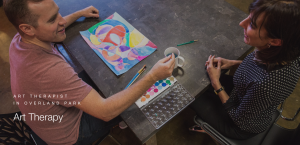
This picture signifies the motivations and goals I am determine to reach in my field.
Blog 5: Independent vs Interdependent Construal of Self
Through out the fortunate 22 years I have lived, I have always appreciated the smooth roads and evolved from the rocky ones. I have always known the type of individual that I am, but through my experiences with situations or even others, I have grown to be sure of my self. I am passionate, with my beliefs, with my work, and with all the things that interest me. I am confidentwith my self and self-image; I am drivento be my best and succeed and to be good at whatever I choose to do. I believe that I am a balanced person, whether its physical or mental, I have always been neutral. I am braveto take risk and I am also a survivorthrough all of my falls. I am not perfect, there are many things still that I know I need to work on as an individual. I am strikingand also capableto finish a task or to see certain things through. I am also still learning; still learning about my self and the things I am and I am not capable of. I would say with all the characteristics I describe my construal of self, I would say that I am balanced between independentandinterdependent. Half of those characteristics are examples of what I have found in my self independently and the other half are those that I found with other relationships. My proverb for my independent self would be “Leave your Mark on this World” and my proverb for my interdependent self would be “Be Balanced.”

The Photo above is a picture I took on my 19th birthday in Lutraki, Greece.
Blog 4: Reviewing Results from Test 1
I have always been poor test taker, but ever since I began college, I have improved by finding a couple of different study techniques that help me memorize material. For my first exam in Cross-Cultural Psychology, the test consists of 4 chapters, which were Introduction to Cultural Psychology, Cross- Culture Research Methods, Enculturation, and The Culture and Developmental Process. For each chapter, I studied the material In different ways such as flashcards, preparing fill-in-the blank notes, or even re-reading lecture notes. On my first exam, I missed a couple of questions that weren’t on the lecture slides given to us, but were deep in the text itself. For the first test I also never took the chance to fill out the Study Guide and even the Scavenger Hunt extra credit sheet. Although my grade was average, I was disappointed to see all the simple mistakes I made, and know that my grade would have been better if I completed the study guide and scavenger hunt. For my second exam, I plan to review each lecture slide and chapter every week by using all my study techniques instead of just one. I also plan to take advantage of any future extra credit and study guides that are prepared by the Professor.
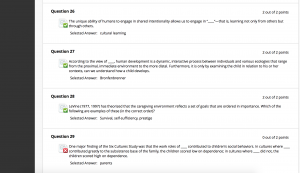
Screenshot of a portion of my exam above.
Blog 3: “NEO Personality Test Results”
After taking the NEO Personality Test, I found many unfamiliar characteristics about my personality. Although I have taken many personality test with very similar questions in the past, I realized that the majority of my answers turned out to be completely different from previous test answers. On the Openness dimension of the NEO personality test, I scored 32. Based on my results, I’m a very practical individual, but I am eager to take on new ways of doing things. I consider myself to be a very balanced person especially between old and new customs. On the Conscientiousness dimension of the exam I scored my highest number of 42. I’m well known for my conscientious and organization skills. Since I can remember, I have always had high standards for almost anything and have always been driven to accomplish the goals I’d set for myself. My Conscientiousness dimension of my personality has not changed. For the Agreeableness dimension, I had a score of 35. I have always been compassionate and good natured and steer clear from any conflict, but now I’m only compassionate to those who I care most about instead of being compassionate for everyone and everything. My agreeableness is high but the only difference is being that I have become more limited. On the Extraversion dimension I scored a 30. In the past I thought I was the most extroverted person I knew, but I have slowed down through out the years. Now I am moderate in activity and enthusiastic. I love working with people and having people around but now I also value privacy and alone time. Lastly for our Neuroticism dimension, I scored 16, which was my lowest score in the entire exam. I was average for this dimension because generally I’m calm and laid back. But I can deal and usually handle stress really well. Rarely I would experience feelings of guilt, anger, or sadness but depends on the situation. I do consider my self secure and stable under stressful conditions and yet I obtain an incredible amount of patients.
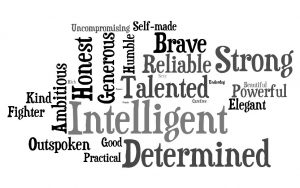
My wordle based on my personality traits.
Blog 2: “What Kind of Student Am I?”
Over time, I have seen a drastic change in my performance as a student. Since I can remember, I have always learned best visually and through practice and have always been motivated and driven to finish any task that I begin. It wasn’t until college that I learned how to improve my study and time management skills. I know that I always put full effort towards the things I care most about. I believe that I am an accomplished student that exercises different strategies to further improve learning and work ethic skills. My confidence level is very high with task and projects that I have done before. Usually when I learn are start something very new, I worry that my performance wont be the best. The one thing I have to improve on is not being hard on my self, and understanding that its okay making mistakes. My overall score for the Self-Efficiency Results was a 95.4. After taking the survey, I realized that there is some room for me to work on believing in my ability.

This is a photo of me standing at the mean solar center time line at the Royal Observatory in Greenwich, London. I chose this image because it during a time when I crossed going to London and standing on the GMT off my bucket list. This photo was taken last spring during a study abroad trip to London.
Blog 1: My Expectations and Steps to Ensure Success In PSYC 420
My expectations in this course is to gain insight on human behavior from individuals with antithetic lifestyles and culture. In my early college years, my psychology courses mainly focused on studies and statistics from citizens of America. What I hope to learn is how different we are from the rest of the world when it comes to mental processing and behavior. My goal is to learn how to research human behavior from individualistic vs collectivist cultures and acquire their cultural perspective. After graduating college, I’d like to travel more outside of America to study and gain this knowledge. With this research I plan to discover different effective therapeutic strategies to help individuals from either individualistic and collectivist backgrounds.

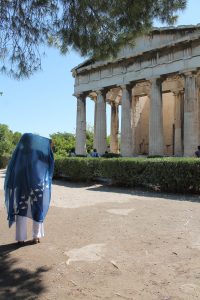
This is a self generated photo I took while I visited Greece three years ago. This is a photo of a Greek women looking up at the Temple of Hephaestus. I chose this photo because I believe that it signifies how cultural history can influence individual’s behavior and relevance